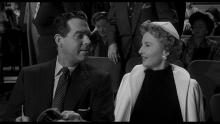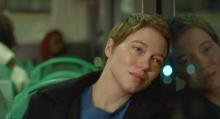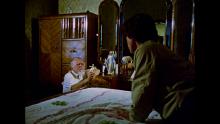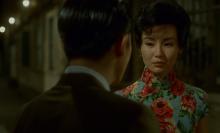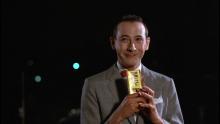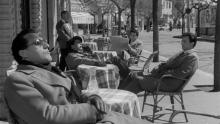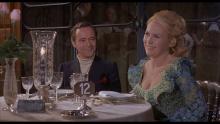The following notes on Linh Tran's Waiting for the Light to Change were written by Nick Sansone, PhD Student in Department of Communication Arts at UW-Madison. Waiting for the Light to Change will screen as part of the Cinematheque's Fall Premieres series and the 2023 Asian American Media Spotlight, co-presented by Asian American Studies at UW Madison. Linh Tran will appear in person on Thursday, October 5 and discuss her work after the screening. The 7 p.m. screening will take place at the Cinematheque's regular venue, 4070 Vilas Hall, 821 University Ave. Admission is Free!
By Nick Sansone
There is a moment late in the runtime of writer/director Linh Tran’s debut feature film Waiting for the Light to Change that no doubt evokes many different coming-of-age films that came before. Near the end of a long weekend spent at an isolated house on the coast of Lake Michigan in the cold gray of early March, five friends (the only five characters in the entire film) climb up onto a nearby lighthouse overlooking the lake and unleash a series of cathartic screams. While the obvious comparison that comes to mind is a similar scene that takes place in a quarry in Zach Braff’s Garden State (2004), one of the many aspects of Waiting for the Light to Change that separates it from both Garden State and the slate of other films dealing with so-called “quarter-life crises” is the deliberately quiet and contemplative building of internal tension. Rather than relying on quirky and distracting visual storytelling techniques or histrionic melodrama, what Linh Tran does here is allow her characters (and, by association, the audience) to meditate on the feelings of stasis that are often experienced by someone in their mid-20s, and the various quiet, subtle ways in which those feelings manifest themselves when spending time with old friends.
Of the five friends that constitute the film’s ensemble, the three that form the emotional core of the film are Amy (Jin Park), her estranged friend Kim (Joyce Ha), and Kim’s boyfriend Jay (Sam Straley). Amy’s plans for a long weekend getaway in Michigan are supposed to be a chance to reconnect with Kim, who left for graduate school and with whom Amy had not spoken since. However, tensions arise quickly. First, Kim’s decision to bring along her boyfriend Jay, also Amy’s old flame, immediately re-opens old wounds and insecurities for Amy that reverberate throughout their time together. Perhaps more unexpected is the tension caused by Amy’s dramatic weight loss that has occurred during their separation. While Amy initially attempts to dismiss the significance of this change when Kim brings it up, the way it hangs over the film serves as a stark reminder of the mental and emotional insecurities that linger even after a dramatic physical change, something that both Amy and Kim have to reckon with in their own ways.
Linh Tran’s modest but lovely debut film finds its origins in a micro-budget production studio developed as a part of DePaul University’s MFA Directing program. As Linh Tran herself tells it, a completely different project was originally slated as her debut, but restrictions at the outset of the COVID pandemic made her micro-budget plans untenable. This setback compelled her to write a new screenplay in collaboration with two co-writers (Jewells Santos and Delia Van Praag) that Tran described as an encapsulation of “what [they] know right now as 25, 26-year-olds.” The resulting script was approved at a budget of $20,000—including $10,000 just to accommodate COVID guidelines—and was filmed at a Michigan lake house owned by the family of one of the film’s producers. While principal photography only lasted 14 days, Tran was on-location with her cast and crew for 30 days, as they were forced to accommodate for snow days. This ultimately allowed for more rehearsal time, an experience that Tran described as “basically living the movie while making it.”
The resulting sense of authenticity has been noted by numerous critics since the film screened at the 2023 Slamdance Film Festival, where it won the Grand Jury Prize. Brian Tallerico, writing for RogerEbert.com, described how “the slow rhythm allows the performers to inhabit the characters in a way that feels real. It’s as if we’re eavesdropping on a reunion instead of watching a manufactured one.” C.J. Prince of The Film Stage similarly commended Tran for “creat[ing] a strong sense of naturalism without compromising specificity. You can see how much thought Tran, her cast, and crew put into this work, an assuredness that commands attention.” Some have even favorably compared Tran’s style to that of Hong Sang-soo, Jim Jarmusch, or Éric Rohmer, filmmakers united by a proclivity for quiet, low-key stories with a heavy emphasis on naturalism. In fact, Tran herself has specifically cited the “slowness and rhythm” of Hong’s film as a key influence, saying that in his work “you can really feel it as if it’s unfolding in front of your eyes.” Despite its humble origins and shoestring budget, Tran’s assured and formally precise debut film elegantly dramatizes the particular malaise of twentysomething stasis and the pangs that come with a fading friendship.


